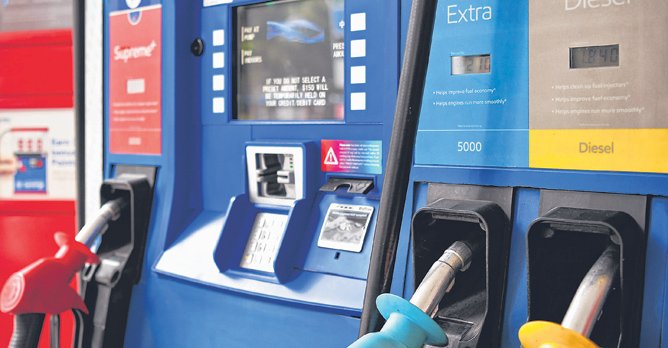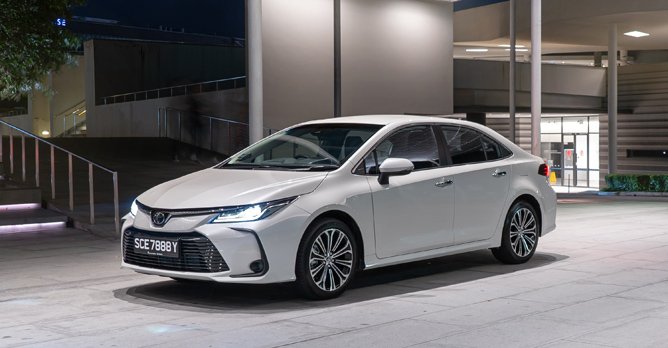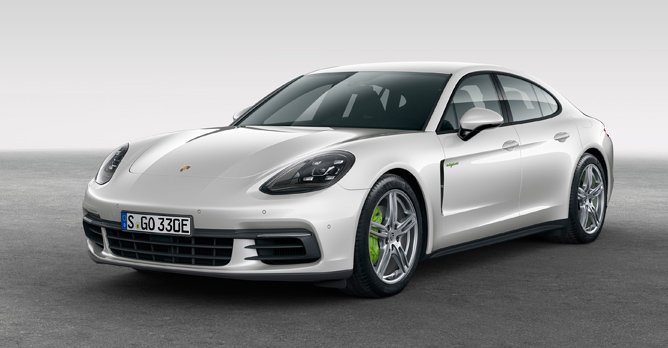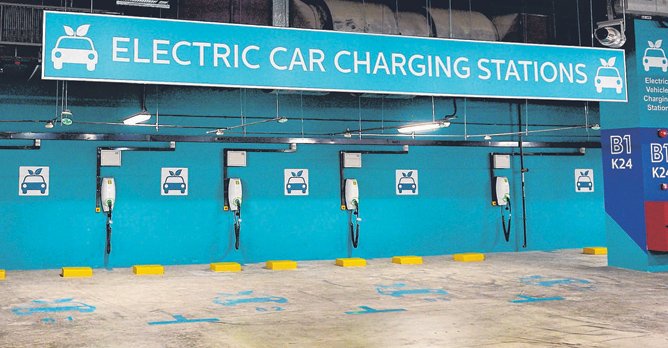Can you actually save money by buying a hybrid car?
16 Apr 2020|14,599 views
You see them everywhere, being driven by private-hire firms and as part of taxi fleets, and for good reason: Hybrids are monumental at saving fuel. But what if you're not spending the entire day crunching miles?
With fuel prices at an all-time low, we take this opportunity to reassess if they still remain the penny-pinching machines we love!
Circuit breaker or bank-breaker?

Of course, in the real world, this breakeven period can still differ due to a multitude of reasons including differences in brake pad wear and oil change intervals (if any).
All comparisons will be using the current price of petrol of $2.09 per litre for RON 95 for all retailers (as of 14 April 2020, obtained from Fuel Kaki's website here) before any discounts.
The affordable hybrid
First up, we have the bread-and-butter hybrids, and representing this segment we have opted to draw a comparison between the recently-launched Toyota Corolla Altis Hybrid and its non-hybrid variant, the Toyota Corolla Altis Elegance. For this comparison we are using the tested fuel consumption figures obtained during our test drives of both cars.
| Car model | Toyota Corolla Altis 1.6 Elegance | Toyota Corolla Altis Hybrid 1.8 |
| Price | $99,888 | $115,888 |
| Fuel Consumption | 13.3km/L | 20km/L |
| Cost per 100km | 7.5L/100km x $2.09 = $15.67 | 5L/100km x $2.09 = $10.45 |
| Purchase price difference | $115,888 - $99,888 = $16,000 |
| Fuel economy difference (per 100km) | $15.67 - $10.45 = $5.22 |
| Breakeven mileage | $16,000 / $5.22 = 306,513km |

Now that might seem like a lot of fuel and driving, so for comparison we have divided the mileage by the average distance covered by a private car in Singapore, which, at 17,500km, gives you an average ownership span of 17 years and six months before that breakeven period. Hardly worth the wait.
The luxury and performance hybrid
But what if you're shopping for a different kind of hybrid? Perhaps something a little more luxurious or sporty? For this comparison, we use Porsche's own fuel and electrical energy consumption figures for the Porsche Panamera PDK and the Porsche Panamera E-Hybrid 4 PDK respectively, both base models of their respective lineup.
| Car Model | Porsche Panamera PDK 3.0 | Porsche Panamera E-Hybrid 4 PDK 3.0 |
| Purchase Price | $370,388 | $425,788 |
| Fuel consumption | 13.1 km/L or 7.6L/100km | 40 km/L or 2.5L/100km |
| Electrical energy consumption | - | 15.9kWh/100km |
| Cost per 100km | 7.6 x $2.09/L = $15.88 | 2.5 x $2.09/L = $5.22 15.9kWh x $0.24/kWh = $3.81 $5.22 + $3.81 = $9.03 |
| Purchase price difference | $425,788 - $370,388 = $55,400 |
| Fuel economy difference (per 100km) | $15.88 - $9.03 = $6.85 |
| Breakeven mileage | $55,400 / $6.85 = 808,759km |

Once again, if we divide that mileage by the average amount travelled by a Singaporean private car, we get a breakeven period of approximately 46 years. You are clearly still paying for any additional power you get from the hybrid versions of your performance and luxury vehicles.
But there's more that can be leaned here. Comparing the consumption figures provided by Porsche and multiplying them against current prices for fuel and electricity, we can see that the cost per 100km is split near even between petrol and electricity.
What this means is that even if fuel prices return to $2.30 per litre, you will only be adding $0.53 dollars to each 100km travelled, as long as you keep your battery charged.

A quick survey via the Greenlots charging app, however, reveals that you can find charging costs as low as $1.50 per hour at a Type 2 charging station, (equating to around $0.20 per kWh of real world charging) as well as fast charging lots, which will cost up to $0.55 per kWh of charging.
For comparison, charging exclusively at that fast charging rate will mean a total of $13.97 per 100km for the energy consumption rates of the Porsche Panamera E-Hybrid 4 PDK 3.0, a paltry saving against the non-hybrid Porsche Panamera PDK 3.0's $15.88.
What about something different?
Well, consider this: Hybrid technology has made great strides since the first Honda Insight and the Toyota Prius, to the effect that there are now also hybrids available for those unwilling to pay a larger upfront cost.
For example, the Subaru Forester e-Boxer is currently available from just $119,800, a mere $5,000 above the non-hybrid Subaru Forester 2.0i-S EyeSight-equipped equivalent. We use Subaru's official consumption figures for this comparison.
| Car model | Subaru Forester 2.0i-S EyeSight | Subaru Forester e-BOXER Mild Hybrid 2.0i-S EyeSight |
| Price | $114,800 | $119,800 |
| Fuel Consumption | 13.5 km/L | 14.9 km/L |
| Cost per 100km | 7.4L/100km x $2.09 = $15.46 | 6.7km/L x $2.09 = $14 |
| Purchase price difference | $119,800 - $114,800 = $5,000 |
| Fuel economy difference (per 100km) | $15.46 - $14 = $1.46 |
| Breakeven mileage | $5,000 / $1.46 = 342,465km |
Unfortunately, even despite the reduction in upfront cost price difference, the breakeven mileage is still a hardly achievable 342,465km, given the equally significant cut in cost savings per kilometer against the pair of Toyotas.
Other fringe benefits
Of course, saving money isn't the end of it all. If you're considering between buying a hybrid and non-hybrid car, you'll also want to think about the many fringe benefits that hybrids cars can bring.
These include the option of utilising green parking lots, the greater range extending your time between each trip to the fuel pump, as well as the fact that their electric responsiveness gives you an edge when jostling for space in city traffic. What this all translates into is more timed saved when driving a hybrid car. Time is money, after all.
*This article was updated on 24 April 2020 due to errors in calculation.
Here are some related articles that might interest you
Tips you need to know when buying a car in Singapore
Should you buy an electric car in Singapore right now?
Can you actually save money by buying a hybrid car?
Top 5 Parallel importers in Central Singapore
12 hybrid cars you can buy in Singapore that will save your wallet
Looking to get a fuel saver yourself? Why not look through our list of the best hybrids?
You see them everywhere, being driven by private-hire firms and as part of taxi fleets, and for good reason: Hybrids are monumental at saving fuel. But what if you're not spending the entire day crunching miles?
With fuel prices at an all-time low, we take this opportunity to reassess if they still remain the penny-pinching machines we love!
Circuit breaker or bank-breaker?

Of course, in the real world, this breakeven period can still differ due to a multitude of reasons including differences in brake pad wear and oil change intervals (if any).
All comparisons will be using the current price of petrol of $2.09 per litre for RON 95 for all retailers (as of 14 April 2020, obtained from Fuel Kaki's website here) before any discounts.
The affordable hybrid
First up, we have the bread-and-butter hybrids, and representing this segment we have opted to draw a comparison between the recently-launched Toyota Corolla Altis Hybrid and its non-hybrid variant, the Toyota Corolla Altis Elegance. For this comparison we are using the tested fuel consumption figures obtained during our test drives of both cars.
| Car model | Toyota Corolla Altis 1.6 Elegance | Toyota Corolla Altis Hybrid 1.8 |
| Price | $99,888 | $115,888 |
| Fuel Consumption | 13.3km/L | 20km/L |
| Cost per 100km | 7.5L/100km x $2.09 = $15.67 | 5L/100km x $2.09 = $10.45 |
| Purchase price difference | $115,888 - $99,888 = $16,000 |
| Fuel economy difference (per 100km) | $15.67 - $10.45 = $5.22 |
| Breakeven mileage | $16,000 / $5.22 = 306,513km |

Now that might seem like a lot of fuel and driving, so for comparison we have divided the mileage by the average distance covered by a private car in Singapore, which, at 17,500km, gives you an average ownership span of 17 years and six months before that breakeven period. Hardly worth the wait.
The luxury and performance hybrid
But what if you're shopping for a different kind of hybrid? Perhaps something a little more luxurious or sporty? For this comparison, we use Porsche's own fuel and electrical energy consumption figures for the Porsche Panamera PDK and the Porsche Panamera E-Hybrid 4 PDK respectively, both base models of their respective lineup.
| Car Model | Porsche Panamera PDK 3.0 | Porsche Panamera E-Hybrid 4 PDK 3.0 |
| Purchase Price | $370,388 | $425,788 |
| Fuel consumption | 13.1 km/L or 7.6L/100km | 40 km/L or 2.5L/100km |
| Electrical energy consumption | - | 15.9kWh/100km |
| Cost per 100km | 7.6 x $2.09/L = $15.88 | 2.5 x $2.09/L = $5.22 15.9kWh x $0.24/kWh = $3.81 $5.22 + $3.81 = $9.03 |
| Purchase price difference | $425,788 - $370,388 = $55,400 |
| Fuel economy difference (per 100km) | $15.88 - $9.03 = $6.85 |
| Breakeven mileage | $55,400 / $6.85 = 808,759km |

Vast difference in per kWh cost at different charging stations mean that the recharging costs for a plug-in hybrid can vary greatly
Once again, if we divide that mileage by the average amount travelled by a Singaporean private car, we get a breakeven period of approximately 46 years. You are clearly still paying for any additional power you get from the hybrid versions of your performance and luxury vehicles.
But there's more that can be leaned here. Comparing the consumption figures provided by Porsche and multiplying them against current prices for fuel and electricity, we can see that the cost per 100km is split near even between petrol and electricity.
What this means is that even if fuel prices return to $2.30 per litre, you will only be adding $0.53 dollars to each 100km travelled, as long as you keep your battery charged.

It will take a long time for the Porsche Panamera E-Hybrid 4 PDK 3.0 to claw back its extra cost with its fuel economy savings
A quick survey via the Greenlots charging app, however, reveals that you can find charging costs as low as $1.50 per hour at a Type 2 charging station, (equating to around $0.20 per kWh of real world charging) as well as fast charging lots, which will cost up to $0.55 per kWh of charging.
For comparison, charging exclusively at that fast charging rate will mean a total of $13.97 per 100km for the energy consumption rates of the Porsche Panamera E-Hybrid 4 PDK 3.0, a paltry saving against the non-hybrid Porsche Panamera PDK 3.0's $15.88.
What about something different?
Well, consider this: Hybrid technology has made great strides since the first Honda Insight and the Toyota Prius, to the effect that there are now also hybrids available for those unwilling to pay a larger upfront cost.
For example, the Subaru Forester e-Boxer is currently available from just $119,800, a mere $5,000 above the non-hybrid Subaru Forester 2.0i-S EyeSight-equipped equivalent. We use Subaru's official consumption figures for this comparison.
| Car model | Subaru Forester 2.0i-S EyeSight | Subaru Forester e-BOXER Mild Hybrid 2.0i-S EyeSight |
| Price | $114,800 | $119,800 |
| Fuel Consumption | 13.5 km/L | 14.9 km/L |
| Cost per 100km | 7.4L/100km x $2.09 = $15.46 | 6.7km/L x $2.09 = $14 |
| Purchase price difference | $119,800 - $114,800 = $5,000 |
| Fuel economy difference (per 100km) | $15.46 - $14 = $1.46 |
| Breakeven mileage | $5,000 / $1.46 = 342,465km |
Unfortunately, even despite the reduction in upfront cost price difference, the breakeven mileage is still a hardly achievable 342,465km, given the equally significant cut in cost savings per kilometer against the pair of Toyotas.
Other fringe benefits
Of course, saving money isn't the end of it all. If you're considering between buying a hybrid and non-hybrid car, you'll also want to think about the many fringe benefits that hybrids cars can bring.
These include the option of utilising green parking lots, the greater range extending your time between each trip to the fuel pump, as well as the fact that their electric responsiveness gives you an edge when jostling for space in city traffic. What this all translates into is more timed saved when driving a hybrid car. Time is money, after all.
*This article was updated on 24 April 2020 due to errors in calculation.
Here are some related articles that might interest you
Tips you need to know when buying a car in Singapore
Should you buy an electric car in Singapore right now?
Can you actually save money by buying a hybrid car?
Top 5 Parallel importers in Central Singapore
12 hybrid cars you can buy in Singapore that will save your wallet
Looking to get a fuel saver yourself? Why not look through our list of the best hybrids?


















